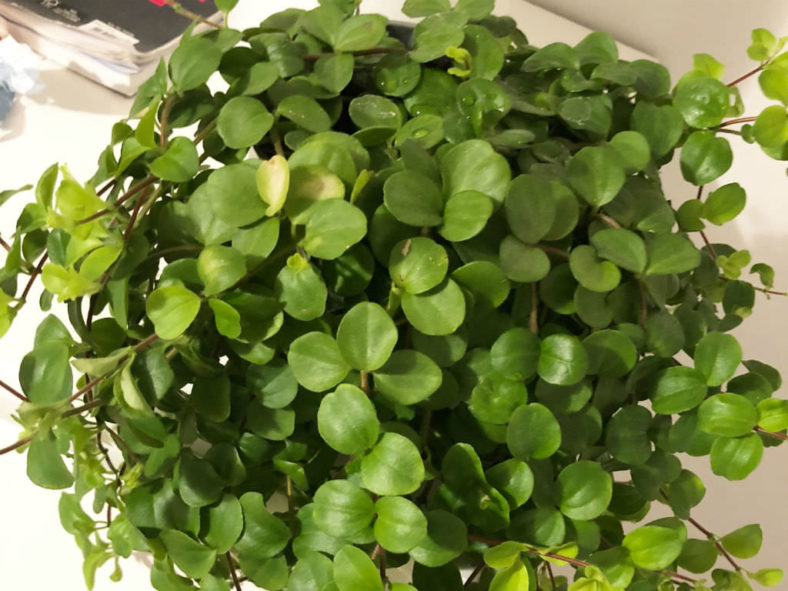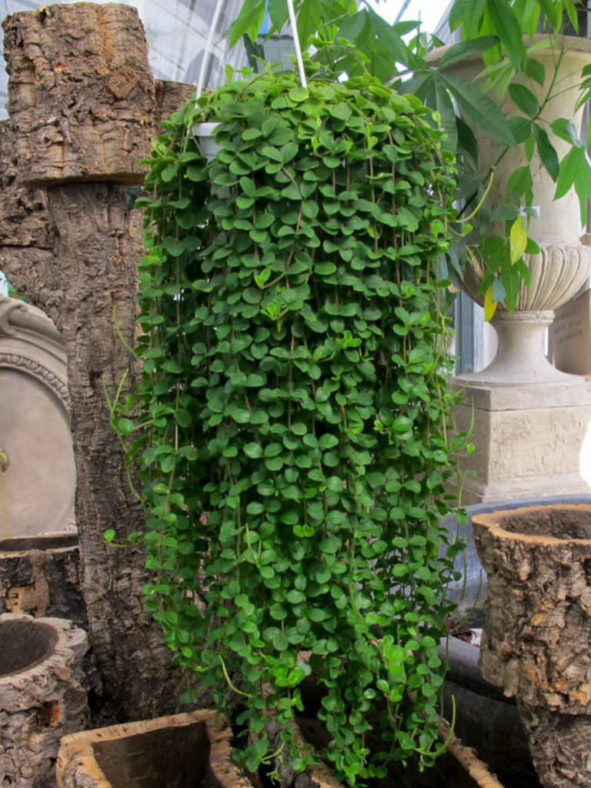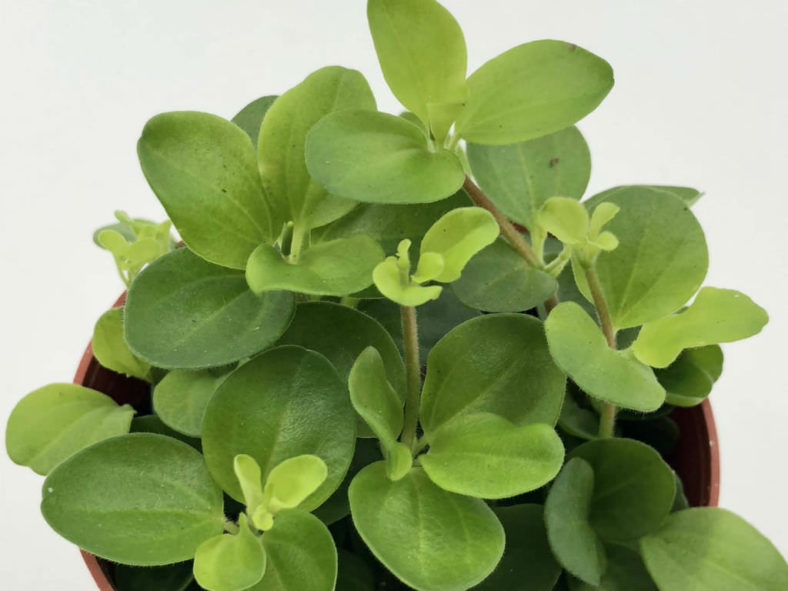Scientific Name
Peperomia rotundifolia (L.) Kunth
Common Name(s)
Creeping Buttons, Round Leaf Peperomia, Trailing Jade
Synonym(s)
Acrocarpidium rotundifolium, Piper rotundifolium
Scientific Classification
Family: Piperaceae
Genus: Peperomia
Description
Peperomia rotundifolia is an epiphyte with many small, nearly round leaves along soft, trailing stems that may intertwine and weave in and out of each other. The stems can grow up to 12 inches (30 cm) long. The leaves are quite thick, soft, and succulent. On close inspection, the lighter green veins are noticeable in darker green leaves.
The plant can produce small flowers on spikes.

Hardiness
USDA hardiness zones 10a to 11b: from 30 °F (−1.1 °C) to 50 °F (+10 °C).
How to Grow and Care
Peperomias are not particularly hard plants to grow, and their small size and delicate leaves make them perfect for desktops and dish gardens. They will rarely overtake their neighbors or shade them out. In short, they are perfectly mannered and attractive little plants. The biggest problems are usually related to watering. They like steadily moist soil but can be very sensitive to overwatering. Overwatered Peperomias tend to wilt or have raised, scab-like protrusions on their leaves. Don't be alarmed if your plant loses a few bottom leaves, but a massive leaf drop is usually due to a temperature change or fertilizer problem. Lastly, Peperomias are susceptible to mealybugs, so keep an eye out for cottony white masses on the stems or undersides of leaves. These plants thrive when slightly pot-bound, so don't over-pot them.
Repot plants in spring, especially to refresh the existing soil, but place either back into the same size container after root-pruning or go up only one pot size. The largest Peperomias remain relatively small and will never grow into large specimen plants. Most species can be relatively easily propagated from leaf cuttings.
See more at How to Grow and Care for Peperomia.
Origin
Peperomia rotundifolia is native to the rainforests of South America.
Links
- Back to genus Peperomia
- Succupedia: Browse succulents by Scientific Name, Common Name, Genus, Family, USDA Hardiness Zone, Origin, or cacti by Genus
Photo Gallery
Click on a photo to see a larger version.



